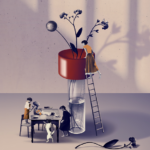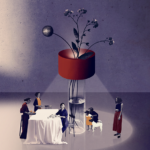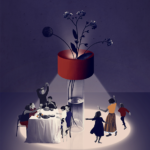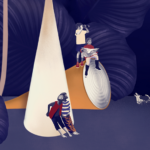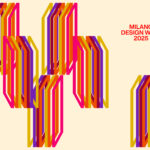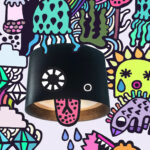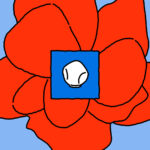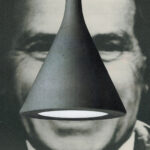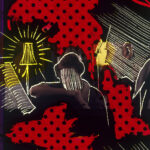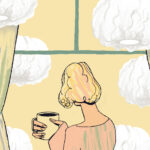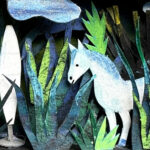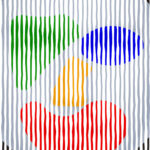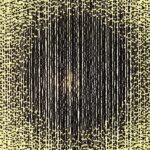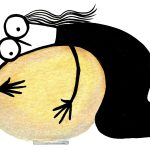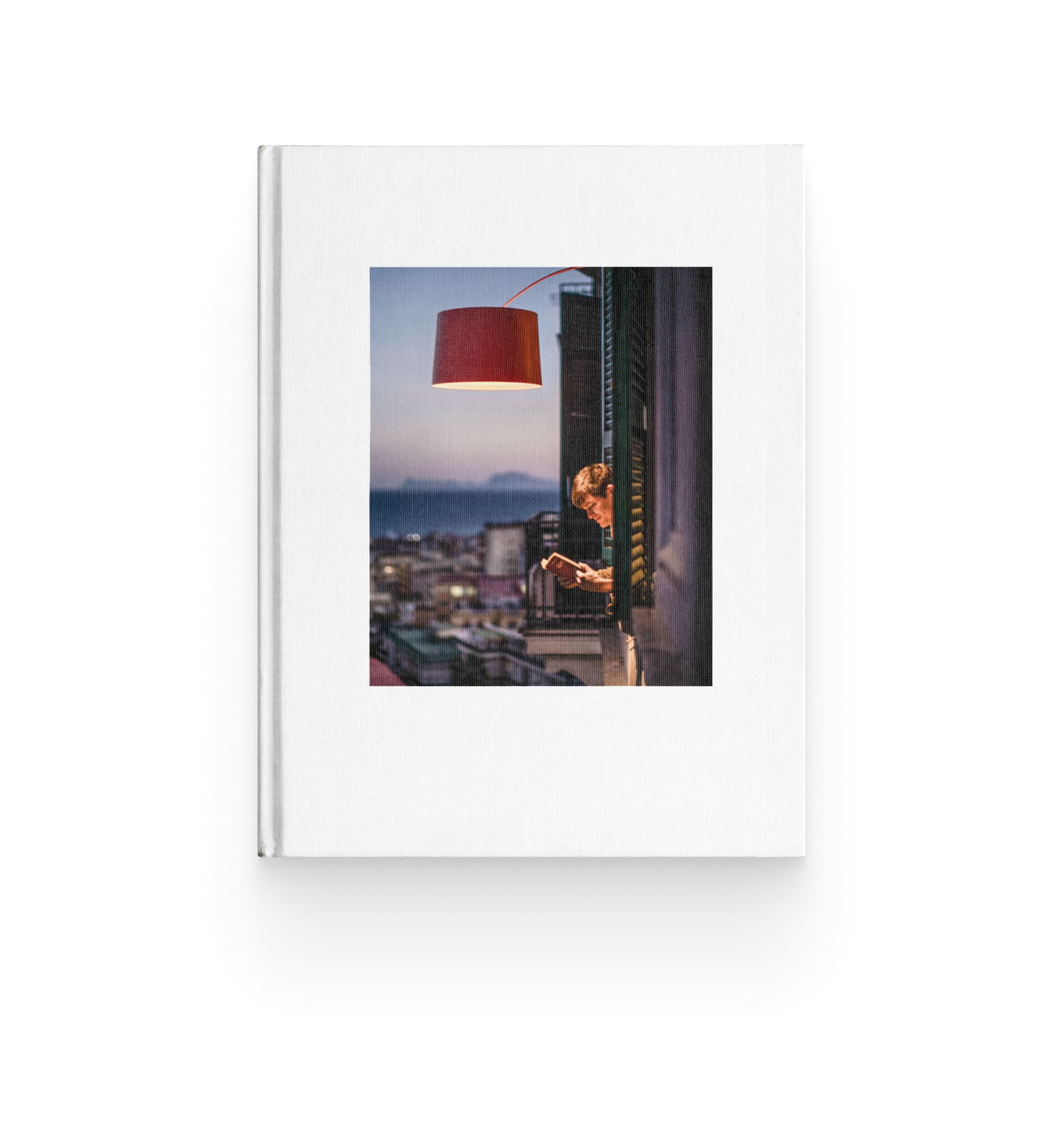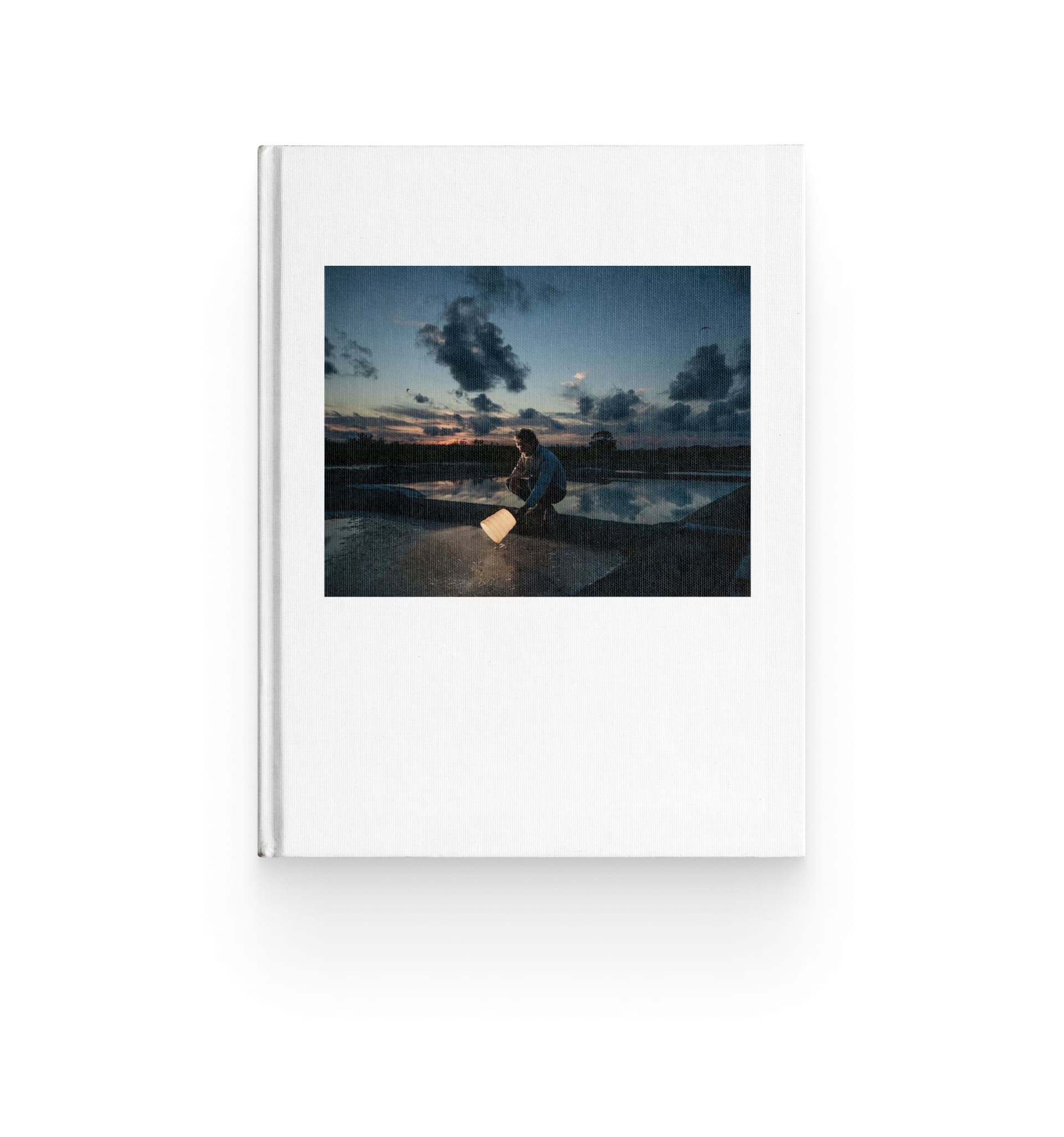Francesca Gastone’s Surreal Microcosms with Foscarini Lamps
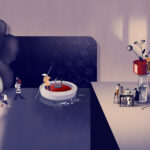
With her talent for merging real-life elements into captivating collage art, Francesca Gastone crafts conceptual wonders that inspire awe and joy. In the latest series for the project “What’s in a Lamp?” she breathes life into Foscarini lamps, transforming them into beacons that illuminate enchanting microcosms of everyday life.
With a foundation in Architecture from Milan Polytechnic and specialized training in editorial illustration, Francesca Gastone draws inspiration from her urban experiences in cities like São Paulo and Hong Kong. Her illustrations capture the essence of human interactions and emotions while highlighting the uniqueness of individuals within the crowd while her architectural training infuses her work with a keen sense of spatial awareness and composition.
Using digital collage as her primary medium, Francesca Gastone vividly portrays life stories revolving around a selection of new and iconic products from the Foscarini collection where each lamp sparks the creation of a ‘microcosm’. Her dreamy, surreal illustrations encourage us to immerse ourselves in their narratives, prompting reflection on which moments of the day resonate with us and which type of light brings us comfort. They serve as a connection to the lamps, outlining paths that bring us closer to them.
“Time unfolds in a sequence of mornings, afternoons, evenings, and nights; the lamps seemingly remain unchanged, yet they possess this remarkable ability to illuminate and come alive, transforming the space and the life around them — only difference here: it’s magnified on a different scale.”
Francesca Gastone
In this exclusive interview, Gastone offers insights into her creative process, tracing her journey from a childhood fascination with drawing to her evolution as an illustrator and architect. She delves into the inspiration behind her collaboration with Foscarini, sharing the influences that shape her artistic vision.
Hi, Francesca! Can you tell us something about yourself and your artistic journey? When did you start drawing and when did you realize you wanted to become an illustrator?
Drawing has always come naturally to me, and my love for art in all its forms led me to graduate from an art high school and later pursue a degree in architecture. I started working as an architect in Italy and then in São Paulo, Brazil, and Hong Kong. My first approach to illustration came about casually out of the necessity to solve interior design issues. While in São Paulo, a culturally rich city, I found fertile ground to delve into this world: I began buying more and more magazines and illustrated books, attending workshops and courses, but I had very little awareness of how illustration could become a true profession. The birth of my daughter Olivia coincided with my move to Hong Kong. This time, characterized by slow yet intense rhythms, discovery, curiosity, and a real immersion in picture books, was a turning point. One day I took a plane to Shanghai and spent three days showcasing my works (at that time, still very raw) at the Shanghai Children’s Book Fair. I didn’t gather much, but I understood it was a real, achievable path, and illustration became a necessity. However, I felt I lacked solid foundations, so in 2021 I decided to enroll in a master’s program in Milan. From that moment on, my perspective on this profession changed, and I realized that illustration encapsulated in the right amount everything I loved.
How do the two souls of Francesca Gastone, the architect and the illustrator, coexist and influence each other?
They constantly coexist and influence each other to the extent that it’s sometimes challenging to distinguish where one ends and the other begins. I recall at the age of 7, I only drew roofs and tiles, and my teacher jokingly told my mother that I would become an architect. Whether it was her unwavering trust in her judgment or a genuine inclination that motivated me, I took those words as a revelation, as if I had received a gift, and the path ahead had miraculously become clear. The image of the architect seemed magical and incredibly potent to me; no one in my family had ever ventured into this field. This anecdote still brings a smile to my face today, and I believe architecture remains one of my greatest passions; I owe it a lot. However, over the years, and after living on three continents with different approaches to the architect’s work, I realized that role often felt constricting to me. Illustration somehow resolved many things that were unresolved within me, but the truth is, I feel like an architect even when I’m illustrating. The polytechnic school instilled in me a method that I almost subconsciously apply to every aspect of my professional life. It’s an invaluable yet sometimes burdensome baggage that often traps me in patterns I find hard to break free from.
How would you describe your artistic style, and how has it evolved over time?
Actually, I began by doing what I always did in architecture, but instead of blueprints and technical drawings, I started creating imaginary and metaphorical structures and bringing them to life. Architecture isn’t just about buildings; it’s a tool to explore any theme because it resonates within all of us. Humans can inhabit not only physical spaces but also emotions, sensations, and ideas. We have the power to decide how much of ourselves to invest, whether to fill a space or leave it empty – creating a void, a silence, both physically and conceptually. That’s what drives me. Often, like with Foscarini, I play with contrasts, turning objects into small inhabited worlds. The resulting surprise is my gauge of success; if I manage to evoke wonder, then I know I’ve done a good job. Another crucial aspect is collage: while I sometimes abstract elements to convey a theme quickly, I always incorporate real characters and objects. This connection to reality is vital to me, and I meticulously choose their expressions, positions, and gazes.
What is your greatest source of daily inspiration, and how do you cultivate your creativity?
Without a doubt, people and their diversity are my main source of inspiration. My illustrations rarely shout a direct message, becoming sort of manifestos. Instead, they paint a picture of an ideal future for me. They predominantly feature people; the human element is essential for interpreting the image itself. Living in bustling metropolises like São Paulo and Hong Kong has sharpened my perception of others’ lives, allowing me to recognize uniqueness within the multitude. share a common essence while retaining their distinctiveness. Perhaps this is why I love big cities: this shared sense of identity is more common and feels tangible, almost necessary.
I nurture my creativity by observing and continually capturing subjects, places, and atmospheres through photography; my computer is filled with countless folders of images that I revisit and utilize as needed. However, none of this would be feasible without ongoing study and an insatiable curiosity about the past (what has already been done, the masters, the baggage we carry) as well as the present. We live in an era where stimuli are excessive and everywhere, and we must develop our own critical perspective. I believe this is extremely important.
Tell us about how the collaboration with Foscarini came about.
Foscarini has been a constant presence in my life as an architect, from their products to Inventario. Collaborating with them is what I’d call a “dream project” – it’s the perfect fusion of everything I hold dear.
In the project “What’s in a lamp?” for Foscarini, you created fascinating ‘micro-worlds’ around the lamps in the collection. Can you tell us more about the inspiration behind this series?
The starting point was the Foscarini products themselves. I wanted them to take center stage in the narrative, so I began examining them in terms of their interplay of solids and voids, each with its own life defined by time and light – whether natural or artificial – and the resulting shadows. It felt almost instinctive to envision them as miniature architectures around which life revolves. Time unfolds in a sequence of mornings, afternoons, evenings, and nights; the lamps themselves seemingly remain unchanged, yet they possess this remarkable ability to illuminate and come alive, subtly transforming the space and the life around them. It’s a subtle enchantment, a reflection on the everyday magic that surrounds us – only difference here: it’s magnified on a different scale.
Are there objects that, like the Foscarini lamps in your series, represent fixed points, constant presences around which your daily experiences develop?
I’ve lived in numerous homes and have a complicated relationship with the notion of home itself (perhaps this is where my obsession with dwelling comes from), and over time, I’ve become increasingly selective in choosing the objects that surround me. However, the one constant, the “anchor” in each of these homes, I believe, has always been the dining table. Life in the entire house revolves around that table – from meals to preparation, from studying to work, from experimentation to play, from conversation to hospitality. In fact, it currently occupies almost the entire house. In fact, it currently dominates nearly the entire house. If I had to pinpoint specific objects that have accompanied me in these eleven homes, they’re all small and easy-to-carry items: a wooden Holy Spirit, a gift from a friend; a book by Zumthor; an old photograph of my grandfather capturing the blossoming of a succulent plant; an engraving of a group of Brazilian araucarias. It’s like a small, portable Wunderkammer.
Can you delve into the narrative aspect of your creative process?
The storytelling behind each piece is crucial and holds a significant role; it enriches and shapes the work itself. Deciding what to say, to what extent, how to express it, and what tone to adopt influences all subsequent formal decisions, from composition to color palette. Personally, the works I prefer are those that don’t aim to provide definitive answers but rather provoke questions. I believe the illustrations created for Foscarini exemplify this approach: they portray life unfolding around the lamps, but they don’t give us instructions on how we should interact with them. Instead, they prompt us to reflect, to see ourselves within them, and to ponder what role we might have played, which moments of the day resonate with us, and which type of light makes us feel most at ease. They serve as a connection to the lamps depicted, outlining paths that bring us closer to them and make us want to take part in this carousel of life.
What is your favorite illustration within this project, and what does it mean to you?
Each of these illustrations has been a personal journey for me, but I must say I have a special fondness for Cri Cri’s night. It’s the only lamp I depicted illuminated during the nighttime hours because its resemblance to a small lantern immediately conjured up the enchantment of a night filled with life. In this intimate and magical moment, a child is captivated, absorbed in the pages of a book, making the space feel alive with possibility.
What is your favorite subject to draw?
Children are my favorite subject to draw, for several reasons. Firstly, they effortlessly convey concepts and emotions, as their activities often encapsulate complex ideas in a simple and immediate manner. Their play serves as a metaphor for life itself. Additionally, they are a joy to draw; I’ve been told that I smile while sketching them. In short, they’re the best antidepressant.
What is creativity for you?
I’ll answer by echoing the verb you chose in the previous questions to talk about creativity: cultivate. I think this verb encapsulates its essence perfectly: it’s alive. Creativity demands daily nourishment, attention, and nurturing, but also the ability to make it grow and shine. A capacity that is linked to preparation, as well as innate predisposition.
Immerse yourself in the captivating world of Francesca Gastone’s illustrations and explore the full series on @foscarinilamps Instagram channel
